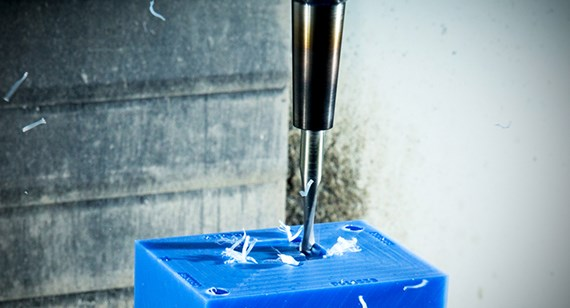The purpose of prototyping is to either confirm that your design is ready for production or to spot problems so you can correct them. If there are problems, you’re probably going to fix them and order new parts. That may require a whole new mold or part of a new mold, or it might be done by simply modifying the existing mold, which will save both money and time.
“Steel Safe” is the common term for changes where material (in many cases steel) can be removed from the mold to tweak a design. Since Protolabs does not necessarily use steel for our molds, we use the term “metal safe.” If you believe changes to your design may require the mold to be tweaked, you’ll want to try to make your design metal-safe. Since metal can be removed from the mold but not added, voids in your first version that may be changed should start out larger, and masses like ribs, walls, and gussets should start out smaller, than they might be in a modified version. The basic rule is that we can usually add plastic in a mold mod, but we can’t ever take away plastic in a mold mod. Remember, not all changes can be accomplished by modifying an existing mold, as noted below.

Once you determine that you want to try a mold modification, there are a few essential points to keep in mind.
Minimum Cutting Depth
When milling molds to change part geometry, there are minimum increments by which we can remove metal. For example, we can almost certainly remove 0.010 in. of metal from an existing mold, but we may have a hard time removing less than that because of the minimum cutting depths needed for milling.
Parting Line Changes
Expanding a part at the parting line will almost always require a new mold, as this can affect mold features such as gating and venting. Gates are channels, often located in the parting line, where plastic enters the part cavity during injection. Vents are tiny channels cut into the parting line to release air trapped in the mold during plastic injection. Vents are located around the perimeter of the part and usually cannot be moved or altered once in place. If the parting line is non-planar, the parting line shutoff design may also preclude an outline expansion.
Undercuts
Protolabs’ process is designed for speed and cost savings and does not permit extensive modification such as the addition of side-action cams to existing molds. However, it is often possible to replace an entire side-action if it can be done without changing the rest of the parting line.
Resin Selection
Plastic resin shrinks as it cools, and molds are made oversize so the part will shrink to the desired final size. Different types of resin shrink different amounts. If you are planning to produce prototypes in multiple resins, don’t plan to modify a mold to accommodate different shrink rates. It is difficult, if not impossible, to adjust a mold to accommodate all the dimensional changes that occur when shrink rates change. An easier way to test different resins in one mold is to design for the resin with the highest shrink rate and machine down the parts whose resins shrink less. Then, once you have made your final resin choice, we can cut a mold to match that resin’s shrink rate.
Predict and Proclaim
Finally, and this is essential, we cannot anticipate the need for future mold modification if you don’t tell us. As long as your design can be machined into a mold, e.g., there are no “required changes” raised by ProtoQuote, we’ll build the mold according to your design. You need to plan for modification; we’ll be happy to help if you have questions. The good news is that, whether a change requires a new mold or modification of the old one, depending on the nature of the change, we may only have to modify or remake one half of the mold, saving both time and money. That is why it is important to let us in on your design and make sure we are aware of the areas of possible change. Only then can we help you make special accommodations for producing a part that might need to be changed later.
Getting a Mold Modification Quoted
Once you have a mold and you’re thinking of a change, you can see whether your new design can be produced by modifying the existing mold. As always, if you have any questions about undercuts, parting lines, or any of these modifications, please contact our applications engineers at info@facfox.com.